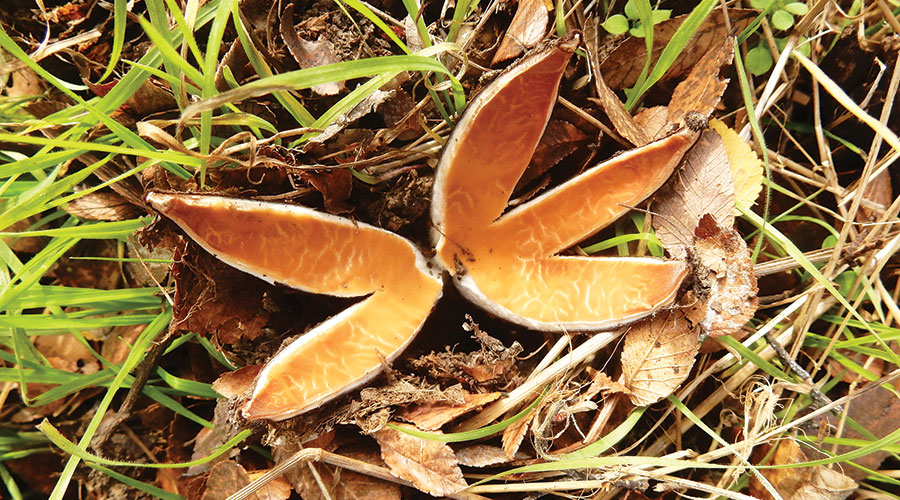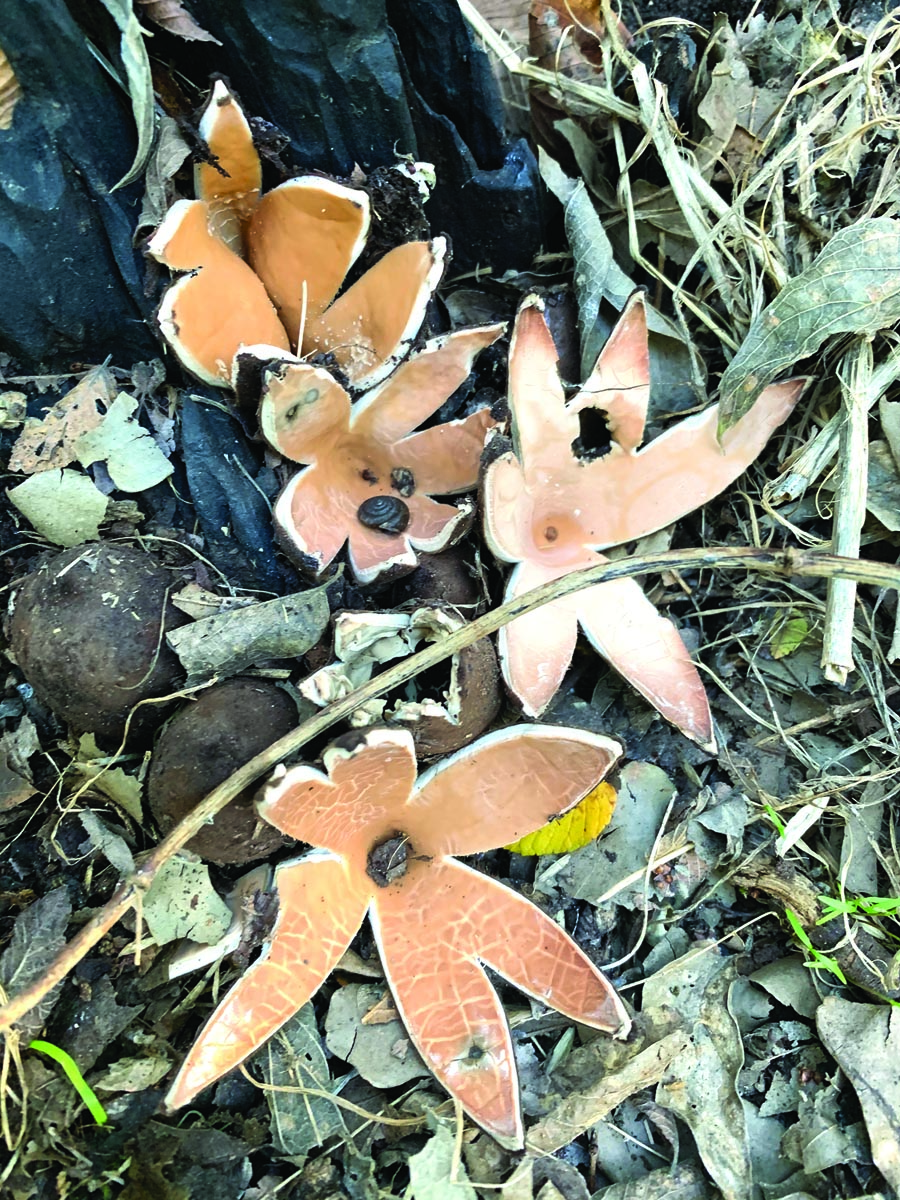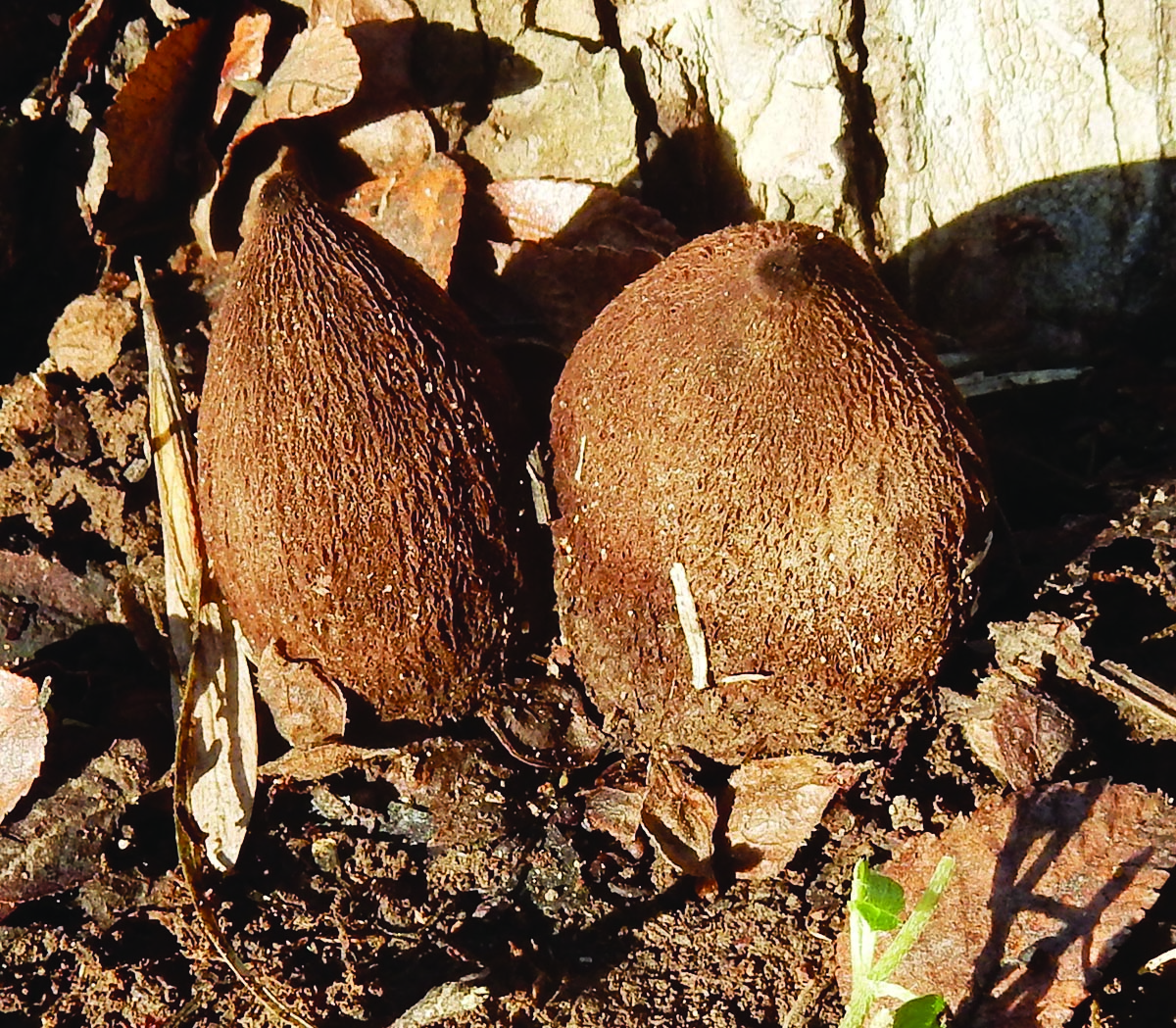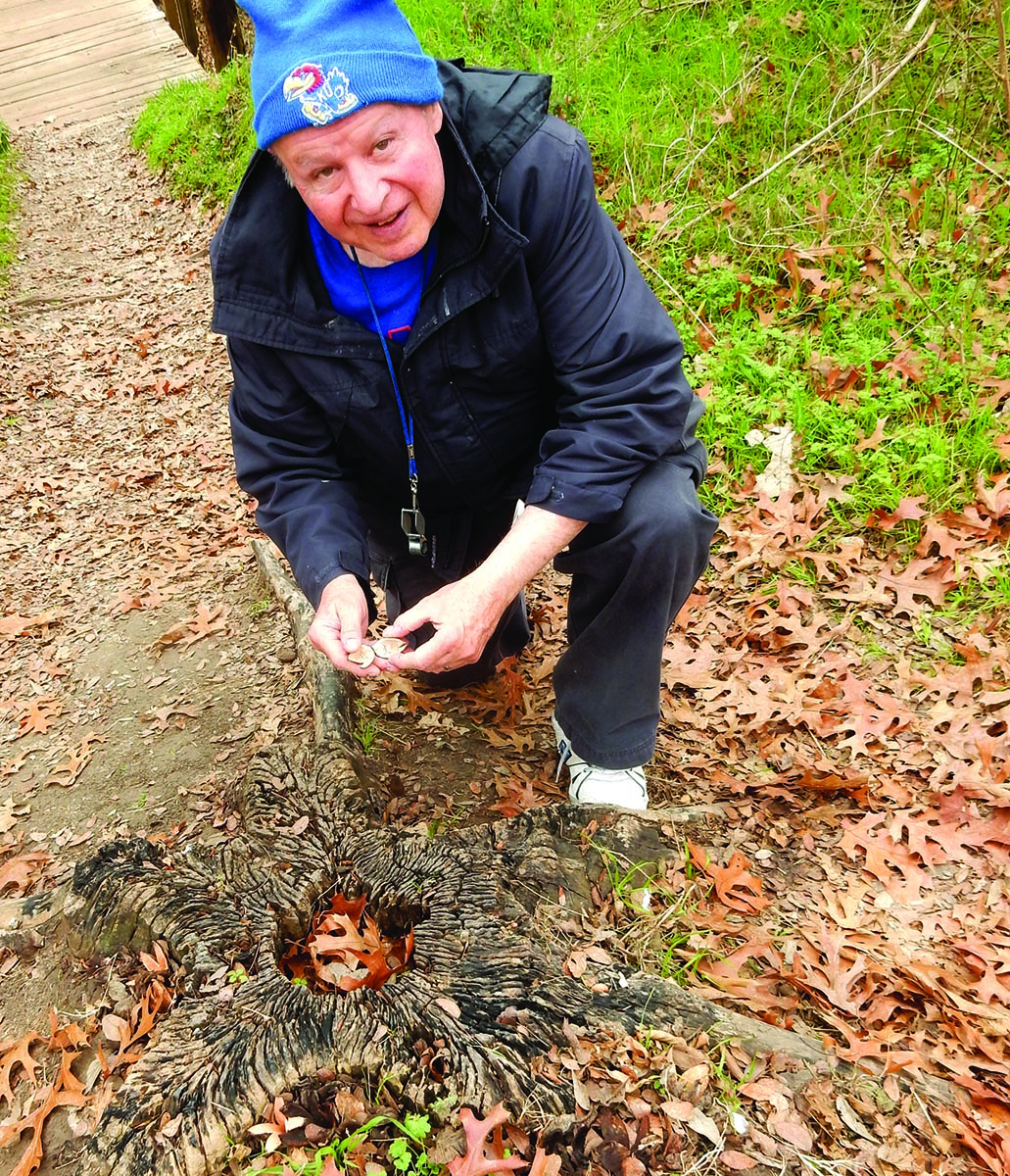
Star Power
By Meda Kessler
Above photo by Bob O’Kennon
A rare mushroom calls Texas home, but manages to remain elusive and mysterious
While walking through Fort Worth’s Botanical Research Institute to an interview room to talk about the Texas state mushroom, BRIT Resident Researcher Harold Keller preemptively answers the question most on our mind. “You know it’s not edible, right?”
We were a bit relieved. If it were tasty like a morel, it definitely would be more susceptible to the masses. But apparently the Texas Star — also known as the Devil’s Cigar or Chorioactis geaster — is not that easy to find. It has only been spotted in 16 counties in Texas and Oklahoma, and also, oddly enough, in Japan. Bob O’Kennon, a BRIT research scientist who’s also part of this interview, says it’s likely that very few people have seen the Texas Star. Both he and Keller are among the lucky ones who have, and they are excited to talk about it, even with a novice. Keller and a fellow biologist first ran across it in the 1990s growing along the Trinity River at Arlington’s River Legacy Park (Keller lives near the park and is a frequent visitor). O’Kennon spotted it in 1986 and, using the iNaturalist app, has recorded it at more than 60 sites, including the neighboring Fort Worth Botanic Garden and Fort Worth Nature Center & Refuge. The Texas Star has been written up in more scholarly journals than we can count. It’s one cool mushroom, which is why we’re including it in this issue. Here are some facts about the Texas Star. Learn more about BRIT at brit.org
So there’s really a state mushroom? Earlier efforts were made to get Texas officials to name the Texas Star the state mushroom, but it didn’t happen until June. It was one of 1,034 pieces of legislation signed out of 9,999 filed between the House and Senate in this year’s session.
People supposedly can’t eat it, but can animals or insects? They have been found with their tops nibbled off, but there have been no sightings of who or what did the nibbling.
How does it reproduce? It forcibly shoots spores into the air, which are then carried by wind currents to its favorite habitat, decaying cedar elm stumps. A hissing sound occurs as the spores are expelled and can be heard from several feet away. This process occurs in fall and winter after rainy periods. Both Keller and O’Kennon have heard and seen the mushroom hiss and expel the spores. Unfortunately, there is no audio or video documentation — yet.
What does it look like? It starts out as a hollow dark brownish-black tube partially buried in the soil. As it’s typically partially covered by leaves, it’s hard to spot unless you’re looking for it. When it matures — the exterior is tough and leathery to the touch — it opens and exposes a pumpkin-colored interior in the shape of a star.
How big does it get? It can grow up to 6 inches in height.
Questions. We have questions. Researchers such as Keller and O’Kennon still want to know many things about the Texas Star: How did the spores spread from Texas to Japan (or vice versa)? Why are they not found anywhere else in the world? Why are the spores released at different times? Can they be transplanted? Keller and O’Kennon, along with other BRIT staff and volunteers, continue to do research and field observation to find answers.
The funny fungi guys
We were expecting Harold Keller and Bob O’Kennon to be quite serious and speak a lot of Latin, but instead, we found a pair of passionate (and witty) botanists who love what they do. Here’s a little bit more about the two men who are not only colleagues but friends.
Harold Keller He’s a proud native Kansan (note the Jayhawks hat in his photograph) who holds multiple degrees, including a doctorate in botany from the University of Iowa. He has given presentations around the world and taught classes such as the Biology of Slime Molds. He got his start in botany after he spent time in Idaho as a member of a forest crew, where he decided he wanted to know everything about trees.
Bob O’Kennon A native of Virginia, O’Kennon grew up being fascinated by nature, especially plants. Since there wasn’t money to be made in that field, he got business and law degrees from Duke and, after serving as a military pilot, went on to fly for American Airlines. He has a beetle named after him, was good friends with Lady Bird Johnson and introduced “Crocodile Hunter” Steve Irwin to his first western diamondback rattlesnake in Texas.




